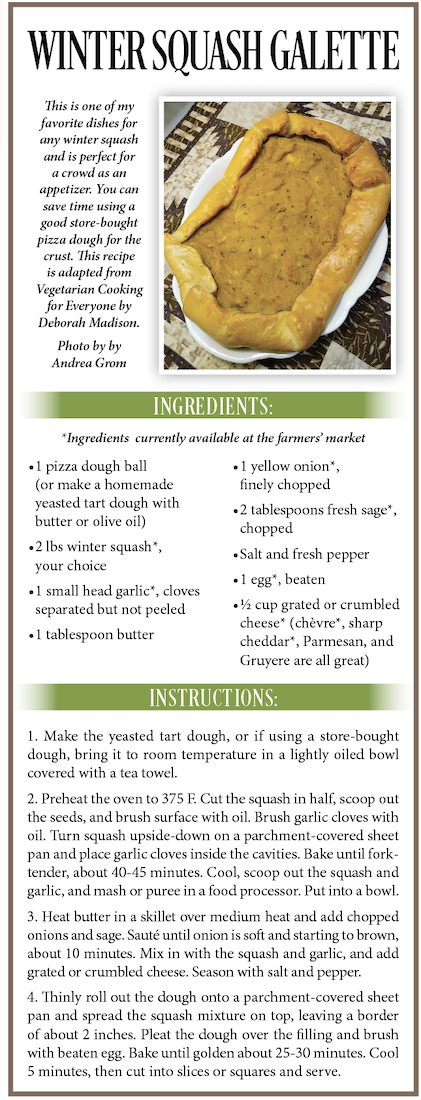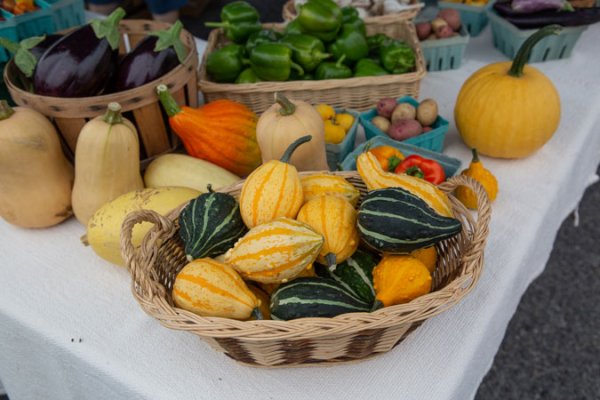One of the most beloved hallmarks of autumn is the pumpkin. It seems that just about everywhere, pumpkins of varying shapes, sizes, textures, and colors are decorating porches, businesses, and farmers’ market tables. In addition to being a delight to behold, many pumpkins are also excellent to eat.
Pumpkins and other winter squashes hail from North America and are among the oldest cultivated plants in the world. Most parts are edible, including the shell and flesh, seeds, leaves, and flowers. All squashes can be scientifically categorized under the genus Cucurbita, and most in our region are one of three species: Curcurbita maxima, Cucurbita moschata, and Curcurbita pepo. Each species has special culinary properties.
The sturdiest and longest-lasting squashes are the Curcurbita maximas. They are the Hubbards, Kabochas, Buttercups, Turban, and Banana squashes. All have a sweet, dense, dry, creamy flesh and a hard, thick rind. Their flavor improves with curing or leaving them in a warm, ventilated space post-harvest. These squashes are delicious in soups and pies, made into gnocchi (Italian dumplings), and roasted with a glaze or marinade.
Butternuts, Honeynuts, Musquee du Provence, and Long Island Cheese Pumpkins are all Curcurbita moschatas. These squashes don’t keep quite as long as the maximas, having thinner skin and slightly more water content, but many are just as sweet and nutty. They are excellent in soups, pies, and casseroles and can be baked, grilled, and roasted.
The Curcurbita pepos are a diverse group of shorter-lasting squashes. They are the Delicatas, acorns (black table acorn, Jester, and Carnival), spaghetti squashes, and pie pumpkins. These squashes tend to be milder and thinner-skinned, and some have stringy flesh. They tend to be easier to cut and roast and can be used in both savory and sweet dishes. Try them twice-baked with a savory stuffing (spaghettis, pumpkins, and acorns), sliced and roasted (Delicatas), or baked and mashed with butter and maple syrup (all of them!).
Despite it being a challenging growing season for winter squashes, a wide variety is available at the Saratoga Farmers’ Market. Be sure to ask the vendors about their favorites and try them at home this autumn and winter.
The Saratoga Farmers’ Market is open on Wednesdays, from 3-6 p.m., and Saturdays, from 9 a.m.-1 p.m., at High Rock Park through October. The market moves to the Wilton Mall on Saturday, November 4. Follow us on Facebook and Instagram for updates, and sign up for our newsletter at www.saratogafarmersmarket.org.

